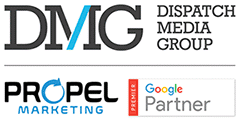 The blog below from the Harvard Business Review looks at Facebook "likes" to determine if they are an effective tool to generate revenue. As a markerter, I found this post to be extremely interesting, especially since Facebook is a key component of any marketing strategy.
The blog below from the Harvard Business Review looks at Facebook "likes" to determine if they are an effective tool to generate revenue. As a markerter, I found this post to be extremely interesting, especially since Facebook is a key component of any marketing strategy.
In a series of experiments, the researchers tested four increasingly interactive ways in which Facebook might affect customers’ behavior. First, they explored whether liking a brand—passively following it—makes people more likely to purchase it. Second, they examined whether people’s likes affect their friends’ purchasing. Third, they looked at whether liking affects things other than purchasing (for example, whether it can persuade people to engage in healthful behaviors). And fourth, they tested whether boosting likes by paying to have branded content displayed in followers’ news feeds increases the chances of meaningful behavior change.
The results were clear: Merely liking a brand neither increases purchasing nor spurs friends to purchase more. Supporting likes with branded content, however, can prompt meaningful behavior change. This shouldn't discourage you from using Facebook as part of your marketing plans, but should, however help you to understand it's role in the overarching theme of your marketing strategy. It IS important for your brand to engage on Facebook since those who "like" your brand often times spend more money than those who don't. But, your strategy shouldn't stop at gathering "likes". Amplifying efforts with advertising can provide higher returns on investment while creating an opportunity to connect with the most-loyal customers. Read the full article below...
 Contact Us to for a free consultation on social media marketing. DMG/Propel is a Google Premier Partner and was recently named 2017's Best Digital Agency from the Local Media Association.
Contact Us to for a free consultation on social media marketing. DMG/Propel is a Google Premier Partner and was recently named 2017's Best Digital Agency from the Local Media Association.
What’s the Value of a Like?
Brands spend billions of dollars a year on elaborate efforts to establish and maintain a social media presence. Think of the live-streamed video of a man setting a world record by skydiving from 128,000 feet (Red Bull) and the strange tweets sent from a supposedly hacked Twitter account that in fact originated with the company itself (Chipotle).
Facebook is the preferred platform: 80% of Fortune 500 companies have active Facebook pages. Each day enormous amounts of brand-generated content—articles, photos, videos, and so on—appear on those pages and on other social media platforms, all designed to entice people to follow, engage with, and buy from brands. Even the U.S. State Department seems enamored of acquiring followers, having spent $630,000 from 2011 to 2013 to garner Facebook likes.
Marketers often justify these investments by arguing that attracting social media followers and increasing their exposure to a brand will ultimately increase sales. According to this logic, recruits who socially endorse a brand by, for example, liking it on Facebook will spend more money than they otherwise would, and their endorsements will cause their friends (and friends of friends) to shop—creating a cascade of new business. At first glance the evidence seems to support this rationale: Many brands have discovered that customers who interact with them on social media do spend more money than other customers. A recent influential study by comScore and Facebook found that compared with the general population, people who liked Starbucks’s Facebook page or who had a Facebook friend who liked the page spent 8% more and transacted 11% more frequently over the course of a month.
Merely liking a brand on Facebook doesn’t change behavior or increase purchasing.
But that study and others like it contain a fatal logical flaw: They confuse cause and consequence. It’s possible that getting people to follow a brand on social media makes them buy more. But it’s also possible that those who already have positive feelings toward a brand are more likely to follow it in the first place, and that’s why they spend more than nonfollowers. In 23 experiments conducted over the past four years and involving more than 18,000 people, we used an A/B testing method to explore a crucial counterfactual: what followers would have done had they not followed a brand. Given the millions of dollars in marketing budgets that flow to social media at many companies, the distinction is not trivial. It has enormous implications for marketers’ resource allocations and for how they manage their brands’ social media presence.
In our experiments, we gradually added complexity to test four increasingly interactive ways in which Facebook might affect customers’ behavior. First, we tested whether liking a brand—that is, passively following it—makes people more likely to purchase it. Second, we examined whether people’s likes affect their friends’ purchasing. Third, we examined whether liking affects things other than purchasing—for example, whether it can persuade people to engage in healthful behaviors. Finally, we tested whether boosting likes by paying Facebook to display branded content in followers’ news feeds increases the chances of meaningful behavior change. We chose to use Facebook in our experiments because it is the dominant social network, but we believe that our findings apply to other popular platforms as well.
The results were clear: Social media doesn’t work the way many marketers think it does. The mere act of endorsing a brand does not affect a customer’s behavior or lead to increased purchasing, nor does it spur purchasing by friends. Supporting endorsements with branded content, however, can have significant results. And given that social media pages are gathering places for loyal customers, they can offer brands a unique source of customer intelligence and feedback from a crucial cohort. Armed with this knowledge, marketers can build new, more successful social media strategies.
Testing the Effects of Likes
Basic psychological principles give reason to suspect that liking a Facebook page could indeed change behavior and increase sales. Research has shown that people experience “cognitive dissonance” when their actions don’t reflect their beliefs, so it would stand to reason that a social media user who endorses a brand on Facebook would be more likely to buy it. Yet that’s not what we found.
In one of our first studies, conducted by two of us (Leslie John and Oliver Emrich) and our Harvard Business School colleagues Michael Norton and Sunil Gupta, half the participants were invited to like a new cosmetics brand on Facebook; most accepted. The other half did not receive this invitation. All participants were then given coupons for a free sample—redemption would serve as a proxy for purchasing. Members of the two groups were equally likely to redeem the coupon; it didn’t matter whether they had been invited to like the Facebook page or not. This finding held in subsequent studies, in which we increased the length of time between proffering the invitation to like and extending the coupon offer; it also held when we ran the experiment with a variety of new and existing brands. Across 16 studies, we found no evidence that following a brand on social media changes people’s purchasing behavior.
Measuring the Return on Facebook Likes
To test the effects of social media endorsements, we asked 728 people who had recently liked a brand for the e-mail addresses of three friends. We sent each friend a coupon for one of the brand’s products, varying the information provided about the referral. In each group, one person was told that his or her friend liked the brand in the conventional, offline sense and had sent the coupon. The second person was told that his or her friend liked the brand on Facebook and had sent the coupon. The third person was told only that his or her friend had sent the coupon; people in this category made up the control group.
We then compared coupon redemption rates among the three categories. We found that 6% of those told about an offline endorsement redeemed the coupon, whereas just 4% of those told about a Facebook like did so. And the redemption rate among the control group was 5%; that is, liking a brand on Facebook had no enhancing effect on the purchasing habits of friends.
The Divide Between Digital and Real-World Behavior
In our final set of experiments, two of us (Daniel Mochon and Janet Schwartz) and Duke University’s Dan Ariely partnered with Karen Johnson, an executive at Discovery Vitality. An insurance company based in South Africa, Vitality offers its customers a comprehensive wellness program. People earn points for engaging in healthful behaviors, such as exercising, buying nutritious groceries, going for routine physicals, and getting vaccines; the points can be redeemed for rewards. The company wanted to know whether getting customers to like its Facebook page would affect those behaviors. To find out, we invited all new Vitality customers to participate in an online survey about Vitality and Facebook, during the course of which a randomly selected group was invited to like Vitality on Facebook, with the others forming a control group. We monitored the points accumulated by customers in both groups over the next four months.
There is a way to convert likes into meaningful behavior: advertising.
By virtue of having liked Vitality, the customers in the first group could engage with the company on its Facebook page—a space in which it invests heavily. The page has innovative branded content, including an app that lets people share their health success stories, ask questions of health experts, and participate in polls about upcoming fitness activities. But unless customers intentionally visit the page, this content is unlikely to appear in their news feeds, even if they have liked the company; Facebook’s algorithms will probably filter it out. Therefore, we suspected that Vitality’s investment in branded content on its page might be for naught. Indeed, when we compared the two groups of participants, we found no difference in behavior; those who had been invited to like the Facebook page accumulated no more points than the others. Once again, merely liking a page did not change behavior. Put another way, liking a company that offers flu shots does not translate into getting a flu shot.
Unlocking the Power of Likes
The good news is that there is a way to convert likes into meaningful behavior, and it’s straight out of the 20th-century marketing playbook: advertising. Each year Facebook collects more than $22 billion in ad revenue. Most of that comes from brands seeking to circumvent the platform’s algorithms by paying to guarantee that their content will be prominently displayed to large numbers of users.
A follow-up experiment with Vitality, using the liking and control groups from the first experiment, proved that this approach can be effective. Over a two-month period, Vitality paid Facebook to display two posts a week to members of the liking group. This made a difference: Participants in this group now earned 8% more points, on average, than people in the control group. Considering how challenging it can be to get people to go to the gym, buy healthful food, and undertake other wellness measures, that’s a profound result.
What does all this mean for marketers? As social media swelled in popularity over the past 10 years, many predicted a revolution in marketing strategy. It wasn’t uncommon to hear about the end of “push marketing” (in which brands promote and advertise their goods and services) and the rise of “pull marketing” (efforts to draw customers in through social media and other channels). “More judo, less karate” became a popular aphorism. But our research suggests that marketing on social media will be ineffective if it uses only pull tactics. The modern social media marketing playbook should combine new and traditional approaches.
Make likes work for you.
Facebook does not currently give companies the option of paying it to highlight the posts of engaged customers, something our research suggests could provide significant value by influencing behavior. Savvy firms could overcome this obstacle by monitoring their social media channels for eloquent endorsements and integrating those endorsements into their marketing messages. The athletic apparel brand Lululemon collects favorable customer-generated content by tracking hashtags (such as #thesweatlife) and retweets it. The fashion retailer Free People adds customers’ Instagram photos to its product pages. And in a holiday promotion, Lamar Advertising’s billboards displayed photos that people had tagged with #ThankfulThisHoliday. More brands could also adopt the increasingly common practice of “seeding” social endorsements by paying influencers to try the brand and send endorsements to their followers. This tactic has spawned several new platforms, such as ReadyPulse, that automatically match brands with appropriate influencers.
Make endorsements meaningful.
Another reason why liking a brand does not influence online friends is that liking is a very weak endorsement; our research shows that it doesn’t carry the same weight as a real-world recommendation. Yet research by MIT’s Sinan Aral and colleagues has shown that endorsements, and referrals more generally, can spur action. One experiment demonstrated that people were more likely to download and use an app if a friend recommended it than if they were merely told that their friend had downloaded it. Other experiments indicate that “deeper” social media endorsements could close the effectiveness gap between real-world and digital recommendations. For example, a study found that Facebook posts indicating that a Facebook friend is using a product—not just that he or she likes it—increase the chances that a member will use the product too. The effect is pronounced when product users send their friends personal messages of recommendation. However, encouraging this level of engagement with a brand can be difficult and expensive.
Our research suggests that when it comes to highlighting customers’ engagement, brands will find it fruitful to choose online postings and other user-generated content that are more creative and meaningful than simple likes. For example, TripAdvisor informs users browsing a hotel which of their Facebook friends have booked there. In the political realm, a campaign to increase voter turnout found that telling people a friend has voted makes them more likely to vote. A word of caution, though: This tactic can raise privacy issues. Facebook discontinued its social ads—ones showing the profile pictures of friends who like the product at hand—in part because of privacy concerns.
Use “pull” marketing to find your best customers, and listen to them.
One reason Facebook advertising can be effective is that a brand’s social media page reaches a highly desirable audience; likes illuminate a path for targeting ads. Yet even if a brand decides not to spend money advertising, it can use its social media channels to gain intelligence from its most loyal customers. This need not entail recruiting new followers through flashy content and other lures; in fact, such tactics might backfire by attracting people who are not strongly attached to the brand. Companies pursuing this option should favor organic growth, letting customers seek out the brand. Almost by definition, the people who go to the trouble of finding a brand on social media will be its most devoted, and thus most valuable, customers. As a group, these customers are a great asset: They will enthusiastically provide feedback to improve product development, management, and delivery; defend the brand against unjustified complaints; and be early adopters of and evangelists for new offerings.
For example, Lego uses its social media channels to gather customers’ ideas for new products and to tout new product lines. MyMuesli, a German maker of customizable granola, asked customers to publish images of their own granola mixes on Instagram and subsequently sold some of the customer-created products through its website. The Dutch airline KLM clearly uses its Twitter account as a customer feedback tool; in addition to responding to customers’ tweets, the airline shows that it is listening by prominently posting its estimated response time in its Twitter header (and updating it every five minutes). Knowing that their voices will be heard can make customers more willing to offer information and might even cause them to be more civil when they (inevitably) have complaints.
CONCLUSION
As social media has grown as a marketing channel, so too has enthusiasm for its potential to drive sales. Yet a recent survey of 427 marketers at U.S. companies showed that 80% are unable to quantify the value of their social media efforts. And in a study of Fortune 500 companies, 87% of CMOs acknowledged that they can’t document that social media creates new customers. Our research helps explain why marketers are frustrated by social media—they are using it the wrong way. Amplifying efforts with advertising can provide higher returns on investment while creating an opportunity to connect with the most-loyal customers.
This article was reposted FROM THE MARCH–APRIL 2017 ISSUE of the Harvard Business Review and written by:




